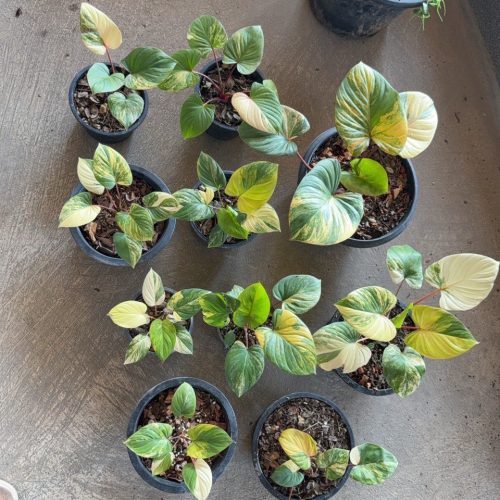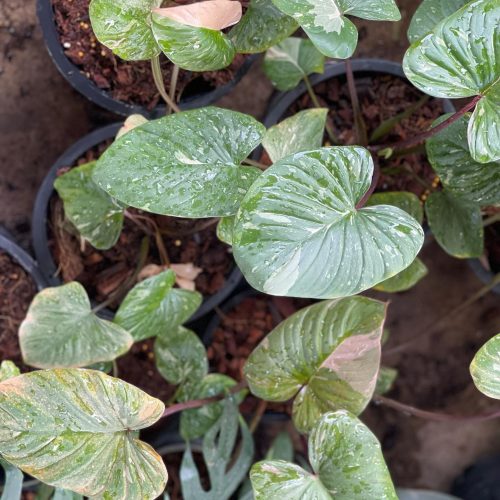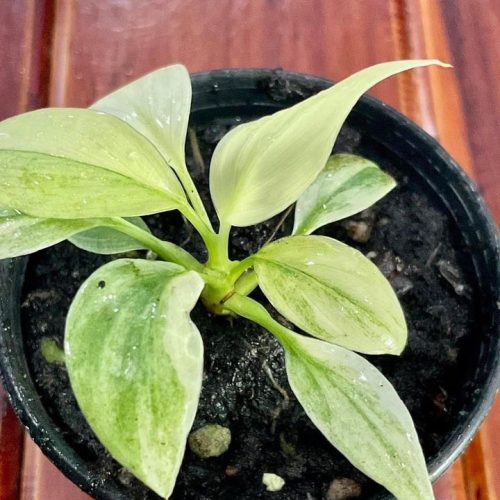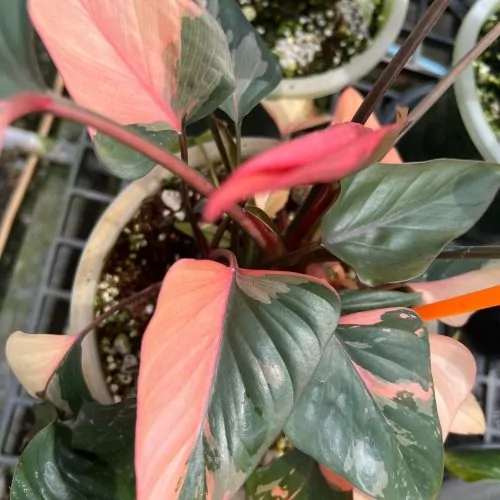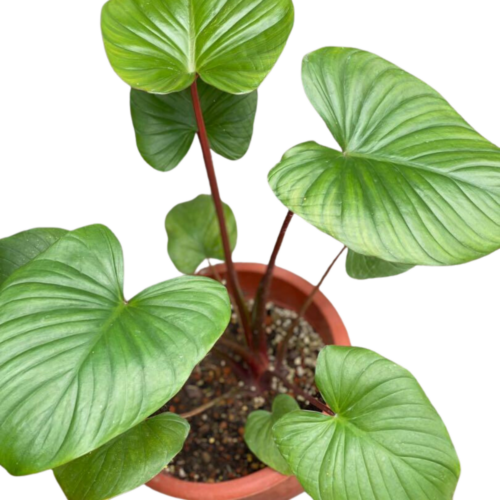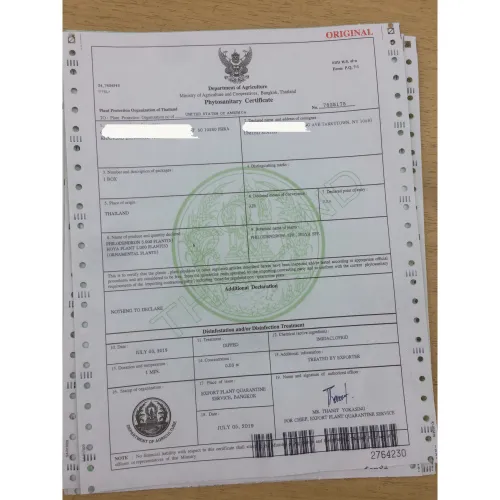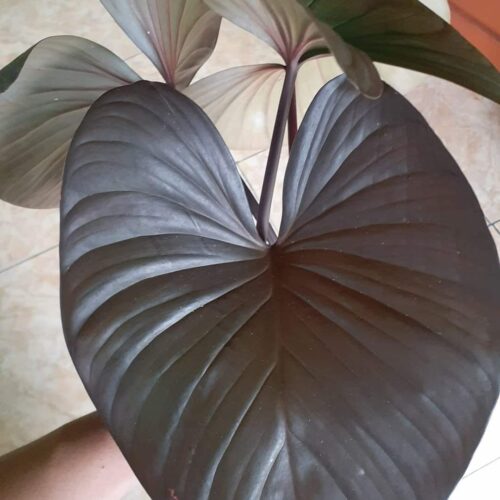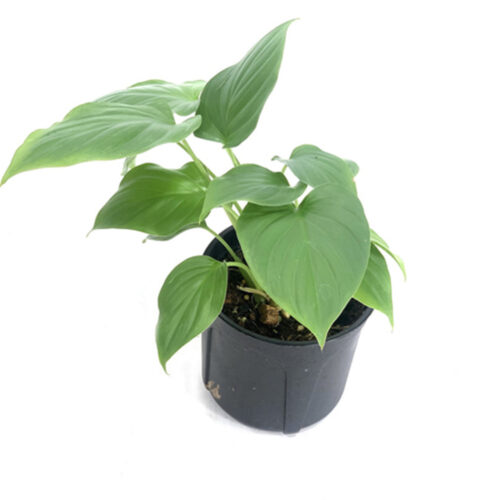Homalomena plants, also known as emerald jewels, are a genus of attractive ornamental plants in the Araceae family. These plants are native to Southeast Asia and are prized for their lush green and sometimes variegated foliage. When it comes to caring for these tropical beauties, understanding their water requirements is key to keeping them healthy and thriving.
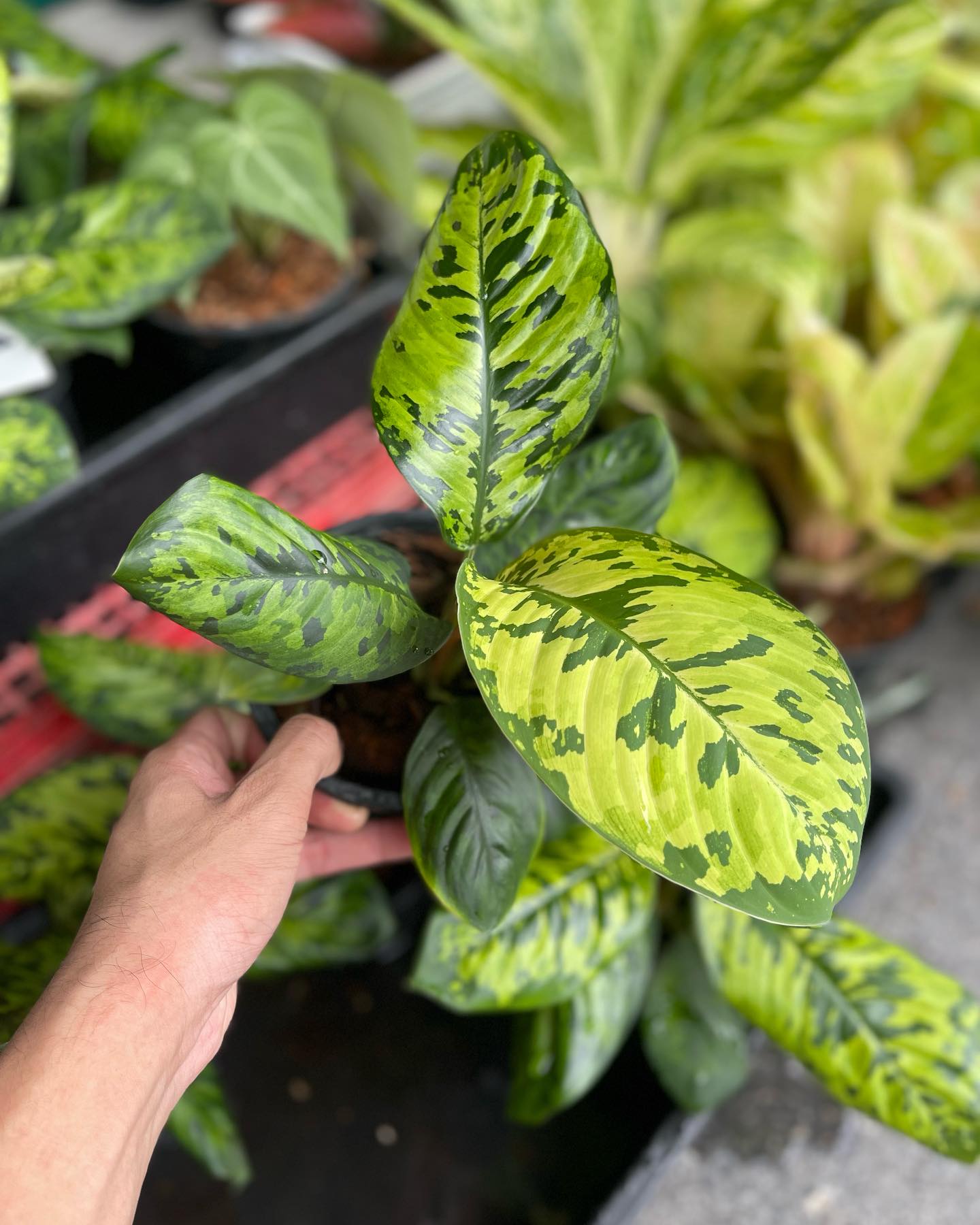
Soil moisture
Homalomena prefer an evenly moist but not soggy soil. The soil should never be allowed to completely dry out between waterings.
Potting mix
Use a rich, well-draining potting mix for Homalomena plants. A quality potting soil containing ingredients like peat moss, perlite, bark chips etc will provide moisture retention and airflow.
Water when top inch is dry
Check the top inch of soil by inserting your finger. If it’s dry, it’s time to water. The entire pot should be soaked thoroughly until water drains from the bottom when you do water.
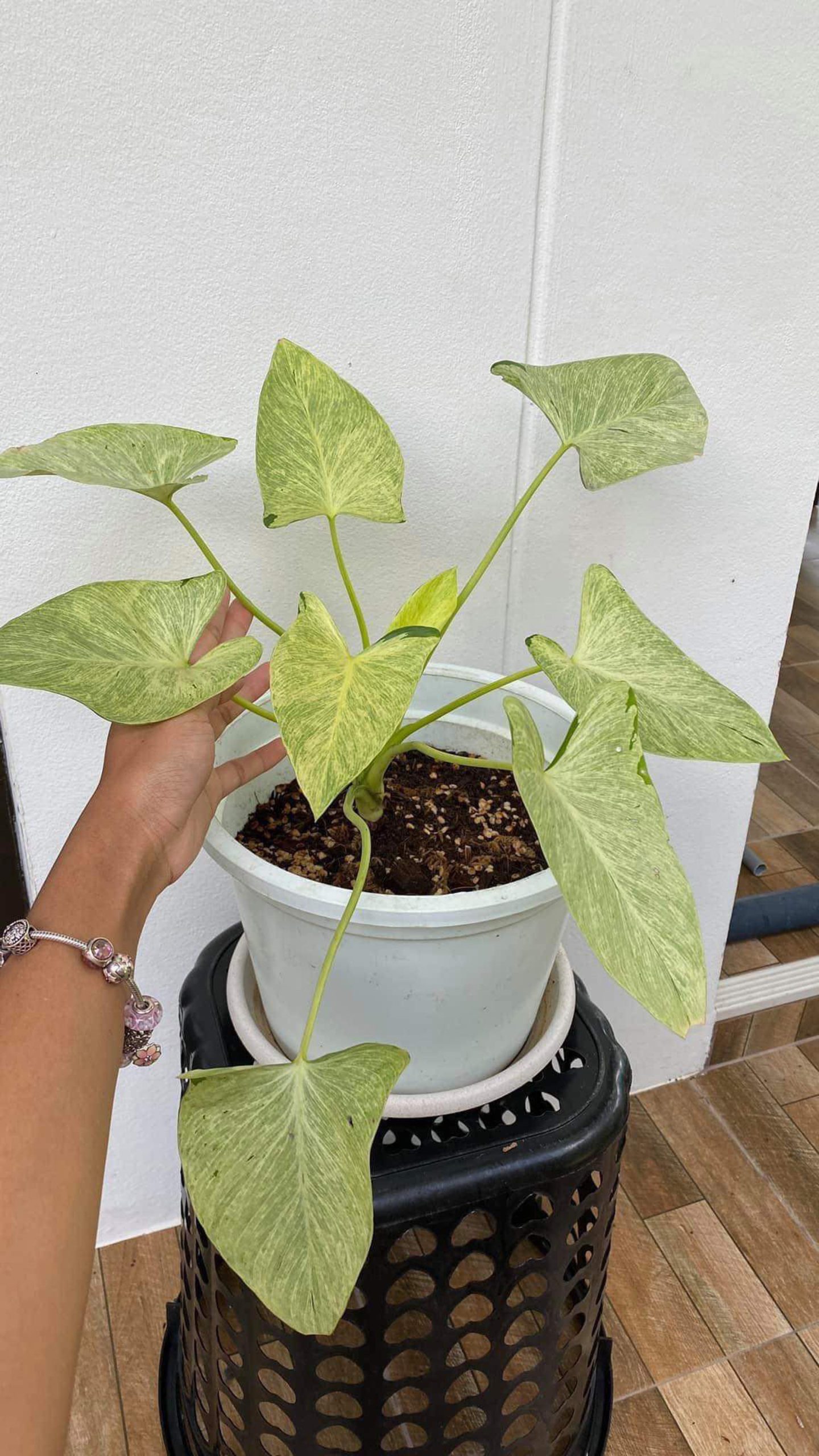
List of the most sought after Homalomena species in 2023
Humidity preferences
Homalomena plants thrive in high humidity environments. Recreating tropical conditions helps the plants flourish.
Misting
Giving plants a regular misting with a spray bottle provides a humidity boost. Focus on misting in the morning so leaves dry out during the day.
Pebble trays
Place pots on pebble trays filled with water and stones. As the water evaporates, it creates a humid microclimate.
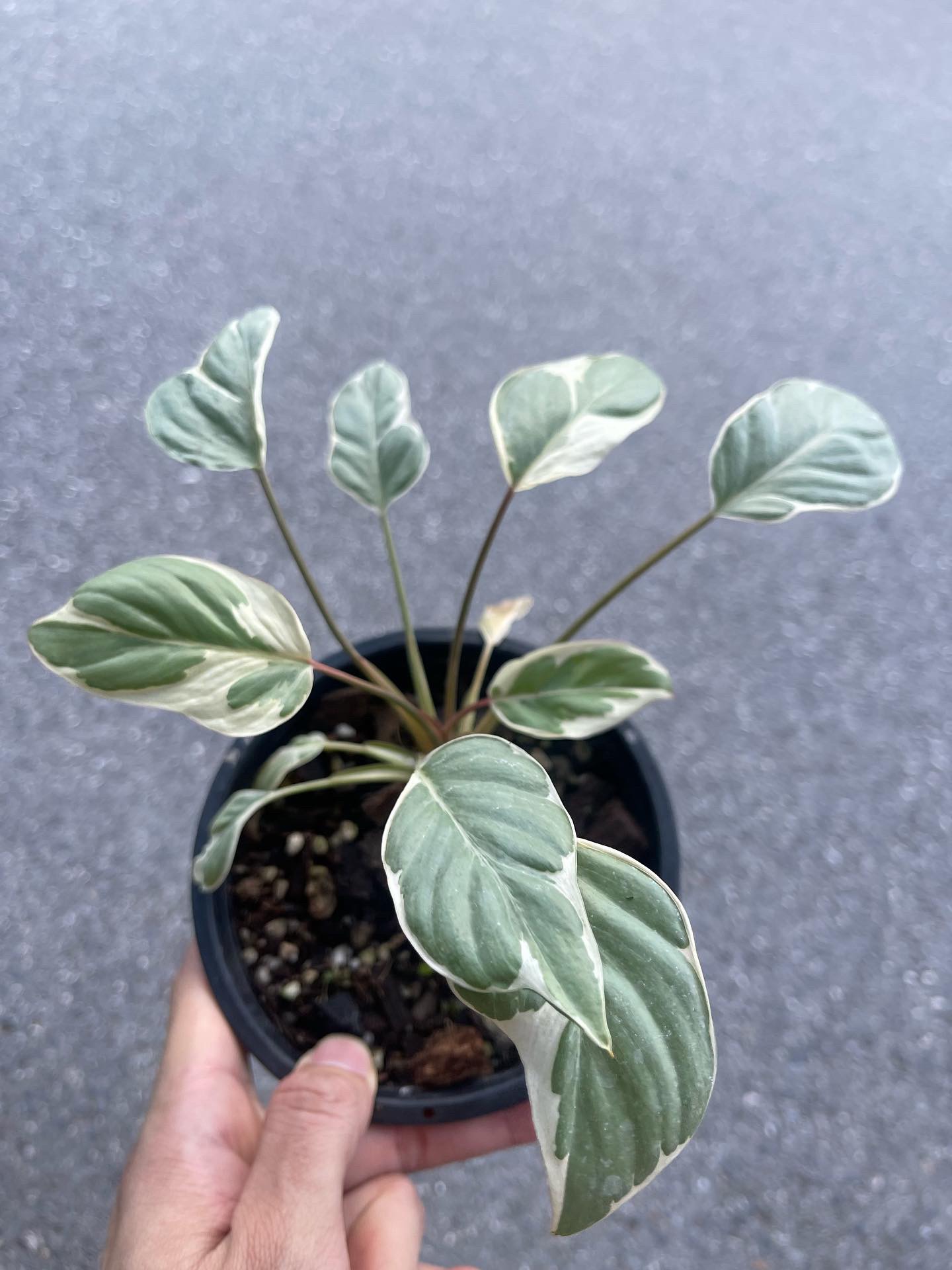
Water quality
Homalomena are sensitive to chemicals and minerals in tap water. Filtered, distilled or rain water is best.
Fluoride and chlorine
Avoid using untreated tap water which can contain fluoride and chlorine detrimental to the plants.
Minerals
Water high in mineral content can lead to brown leaf tip damage over time. Use purified water when possible.
Light requirements
Homalomena grow best in bright, filtered light. Direct hot sunlight will scorch the foliage.
East or west windows
Near an east or west facing window provides suitable light levels. Avoid direct southern exposure.
Sheer curtains
If needed, hang sheer curtains to diffuse intense light from any direction. Monitor for signs of too much light.
Signs of improper watering
It’s important to pay attention to visual cues that indicate improper watering practices for Homalomena.
Wilting, drooping leaves
If leaves severely droop and plants appear limp and wilted, they are likely too dry and require immediate watering.
Brown crispy leaves
If leaf edges turn brown and crispy, the plant has experienced extended drought. Increase watering frequency.
Yellow lower leaves
If older bottom leaves turn solid yellow before dying, this can indicate overwatering. Allow the soil to dry further between waterings.
Where to buy Homalomena? Benefits from importing plants from Thailand
- Shipping: Door to door shipping, fast and safe with Dragon Courier
- Biodiversity: Thailand is known for its rich biodiversity, including a wide variety of aroid species. This diversity allows importers to access a broad range of unique and exotic aroid plants.
- Quality and Health of Plants: The suitable climate helps the plants grown here stay healthy and of high quality.
- Cost-Effectiveness: Due to favorable growing conditions and efficient production methods, Thai aroid plants can often be more cost-effective compared to those from other countries.
- Access to Hybrid Varieties: Thai growers are often involved in the development of new hybrid aroid varieties, offering unique plants that may not be available from other sources.
Homalomena species are the most sought after by aroid plant lovers
Conclusion
Caring for Homalomena requires paying close attention to moisture needs, humidity preferences, water quality and proper lighting. Keep soil consistently evenly moist but not waterlogged. Provide high humidity. Use purified water and bright indirect light. Monitoring plants closely makes it easier to provide the necessary care these tropicals need to thrive indoors. Following these guidelines will lead to beautiful and vibrant emerald jewel plants.
FAQ
- How often should I water my Homalomena plant?
- Answer: Homalomena plants prefer to be kept consistently moist but not waterlogged. Water when the top inch of soil feels dry to the touch, typically every 1-2 weeks.
- Can I use tap water for my Homalomena, or should I use distilled water?
- Answer: Homalomena plants are generally tolerant of tap water, but they can be sensitive to chlorine and fluoride. Allowing tap water to sit for 24 hours before using it can help dissipate these chemicals. Using distilled or filtered water is also a good option.
- What’s the best watering technique for Homalomena?
- Answer: Water your Homalomena thoroughly, making sure water reaches the root zone. Avoid watering the leaves to prevent fungal issues. Empty the saucer under the pot after watering to prevent root rot.
- Should I adjust the watering frequency during different seasons?
- Answer: Yes, it’s a good practice to adjust the watering frequency with the changing seasons. In winter, reduce watering since the plant’s growth slows down. In summer, you may need to water more frequently due to increased evaporation.
- What are the signs of overwatering or underwatering my Homalomena?
- Answer: Overwatering can lead to yellowing leaves, root rot, and a musty odor. Underwatering may cause wilting, browning leaf edges, and reduced growth. Finding the right balance is crucial for the health of your Homalomena.
See more Unlocking Homalomena’s Full Potential: Mature Size Secrets

